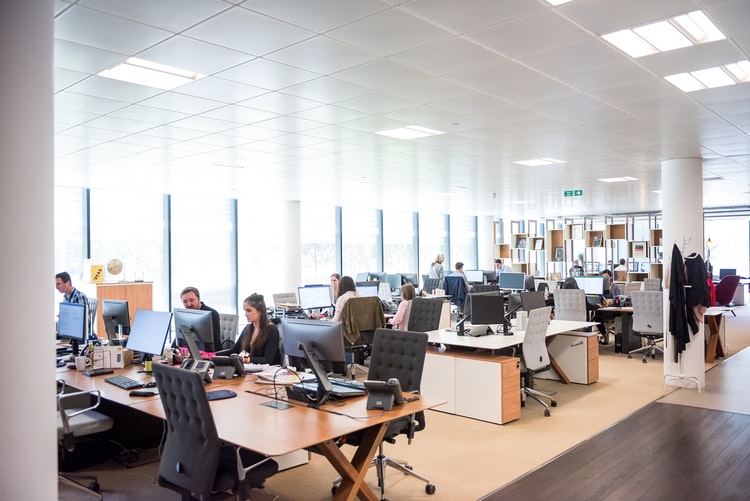When you’re running a business, whether it’s a small operation with just a handful of other staff, or a large company with tens, or even hundreds of employees, keeping them safe and healthy is an essential responsibility. The cost of workplace injury and illness can have enormous repercussions, both on your staff and your business overall, leading to reduced productivity, unexpected costs, and even legal challenges in some circumstances.
This past year has highlighted the need to keep workplaces safe for everyone, so read on to find out more about some of the most common workplace safety issues that you should always keep in mind.
Carry out a regular risk assessment in the workplace
Most regulatory bodies require that workplaces have a clear and transparent risk assessment carried out, and this is one of the first things that any business should do when it begins to employ other staff. There are a number of basic steps involved in carrying out a risk assessment , regardless of the size of the organization. These include identifying potential hazards and who may be at risk of being exposed to them, evaluating the scale of any risks present, and clarifying what steps can be taken to mitigate harm.
It is also essential to carry out a risk assessment on a regular basis, as the environment and risk factors can change over time. Equipment like an electric pallet lift can aid in reducing workplace risks and ensuring the safety of your staff. Doing this regularly will identify any consistent issues that may have been overlooked, and it will also give you a clear picture of how safe your workplace is. By paying attention to this, an employer can help employees feel safe and valued, as well as ensuring that the working environment is a positive one. It may also be a good option to consider a drug test for your employees to ensure everyone feels as safe as they can. Health Street’s 5 panel drug test is a good starter and only tests for things that would be harmful in the workplace.
Provide adequate and sufficient protective equipment
The COVID-19 pandemic has highlighted the importance of having adequate protective equipment, or PPE, to protect both staff and members of the public. Depending on the work environment, protective equipment can vary in form and function such as wearable protective gear or specialised storage such as chemical storage cabinets that you can source from here which is another form of protection against harmful chemicals. In healthcare environments, you may require something that can prevent the transmission of diseases by blocking droplets and vaporized particles, such as gowns, specialised gloves from Unigloves and masks.
In industrial environments, protective equipment can take the form of guards or clothing that can prevent harm from other forms of injury, such as goggles designed to protect eyes, or gloves to keep hands safe from sharp surfaces or chemicals. Supplying the right kind of protective equipment in the workplace doesn’t simply keep staff members safe from harm, but it can also help to protect the business from potential legal action in the case of an accident.
A respectable organization such as the Brown & Crouppen law firm will often highlight that providing PPE demonstrates that workers have responsibility for their own safety. If they have been supplied with the right tools and equipment to work in a safe manner, they should therefore use them. Failure to do so, and any potential injuries they suffer as a result, means that employees must also shoulder some, or all of the liability that arises.
Ensure that employees are trained on workplace safety
An unexpected accident or injury, particularly if it occurs in an environment where you were not anticipating it, can often lead to shock and surprise. It can be difficult to know how to react and respond, and this can often lead to losing valuable time. In the case of serious injuries, any delay can result in more damage, so it is essential to know how to respond in a safe manner.
To help employees learn what to do in the event of an accident or other health issue, it is vital that you carry out regular training in the workplace as this can make a profound difference. In some industries safety training is required, for example construction workers require white card Central Coast training by law, so in this case it would be your responsibility to check all employees have the appropriate white card before they can work. You may have a specific set of actions that need to be carried out, such as an immediate risk assessment to identify other hazards after an accident, who needs to be contacted and informed, and how to shut down or respond to issues such as unsafe equipment.
By ensuring that all staff are aware of what to do in case of an emergency, everyone can feel more confident and secure in the workplace. It can also be helpful to have essential information signposted in common areas, indicating what to do, who to contact, and where to find useful items such as first-aid kits or fire extinguishers.
Manage stress effectively
Accidents and injuries in the workplace are not always the result of heavy machinery or harmful substances. In fact, stress is one of the biggest causes of workplace sickness, and it can have a significant cost on productivity across many different industries. It is therefore essential to review workplace well-being to reduce the effect of stress and identify potential causes that can lead to harm.
In industrial workplaces, such as factories and construction sites, the use of heavy goods and other types of machinery can create stress through prolonged exposure and long hours of use. In these cases, it is often helpful to limit people’s shifts and require that all employees take a break after a fixed time. This can be a useful way of preventing the accumulation of stress and harm, and it can keep people feeling safer and healthier.
You should also carry out regular reviews in the workplace by taking employee feedback into consideration to identify areas of stress. This may vary according to different times of the year, as demands and requirements change. By staying aware of employee feedback, it is much easier to put steps into action to reduce the impact of stress.
Alongside regular reviews, though, you should also make sure that employees have confidence that their concerns are taken seriously, so that they can feel confident in communicating problems that they may see or experience. By fostering a work environment that encourages everyone to speak up when a potential issue is identified, it can keep the working environment more enjoyable, as well as profitable.



